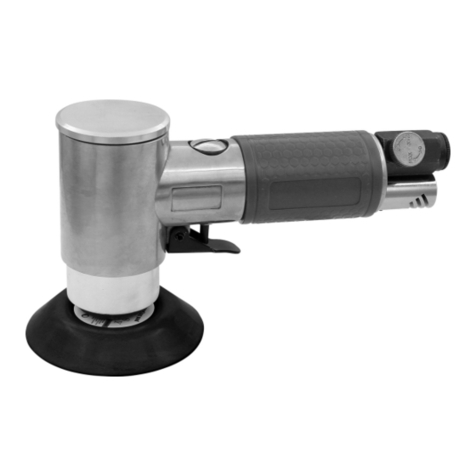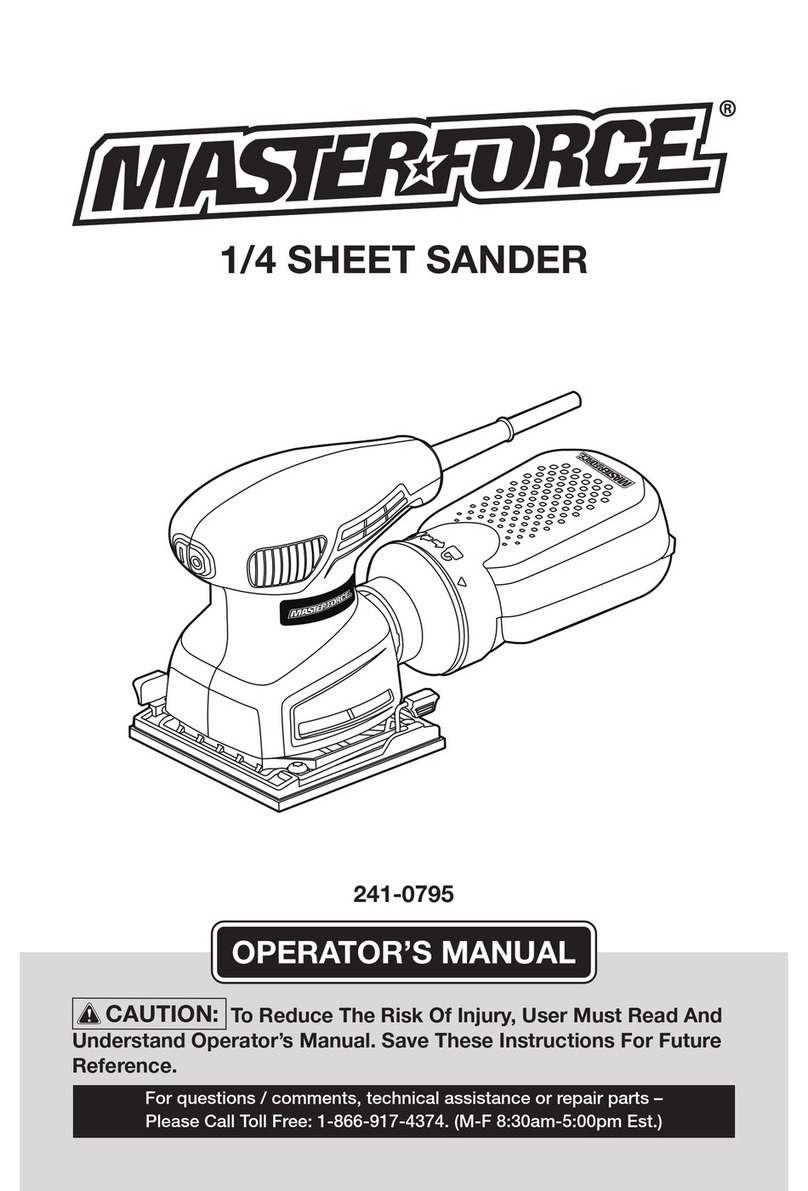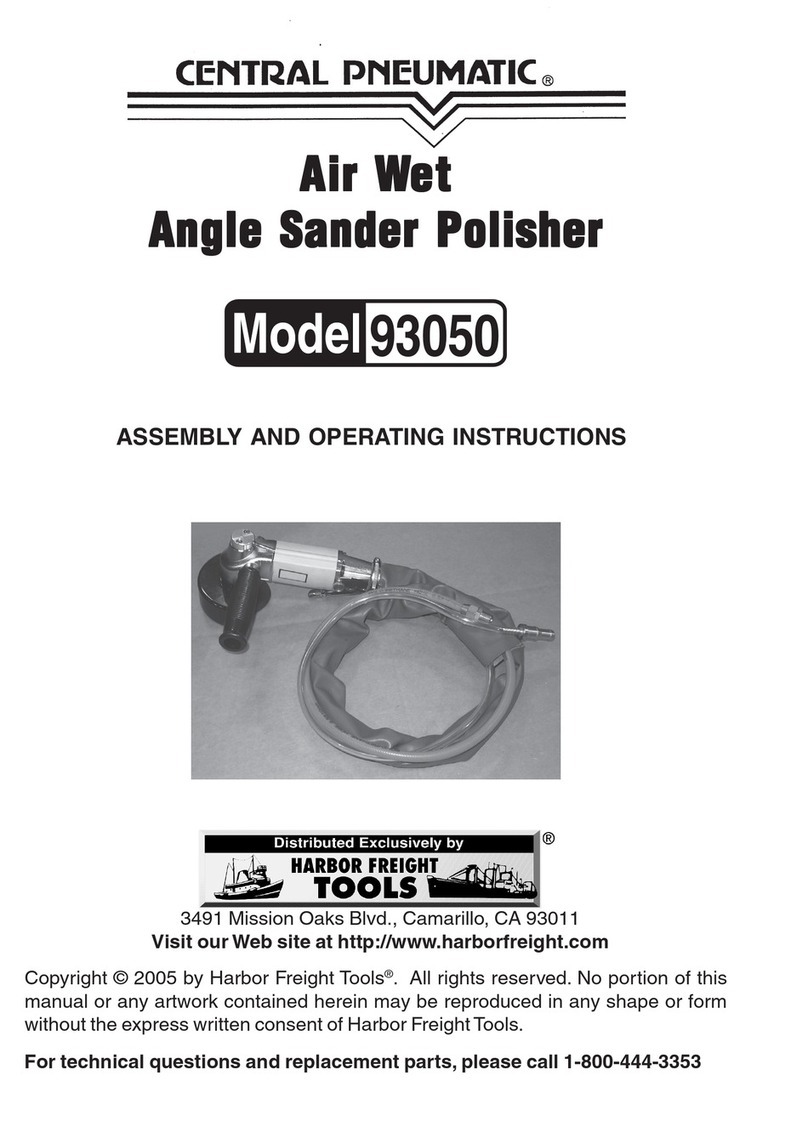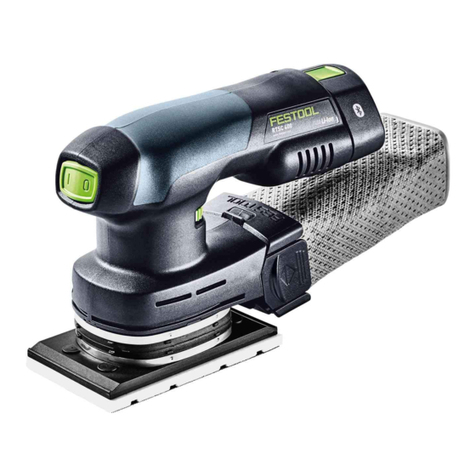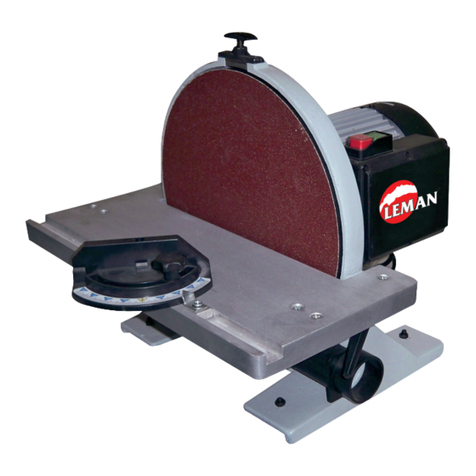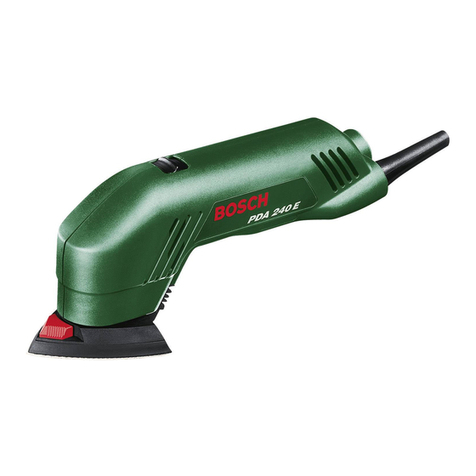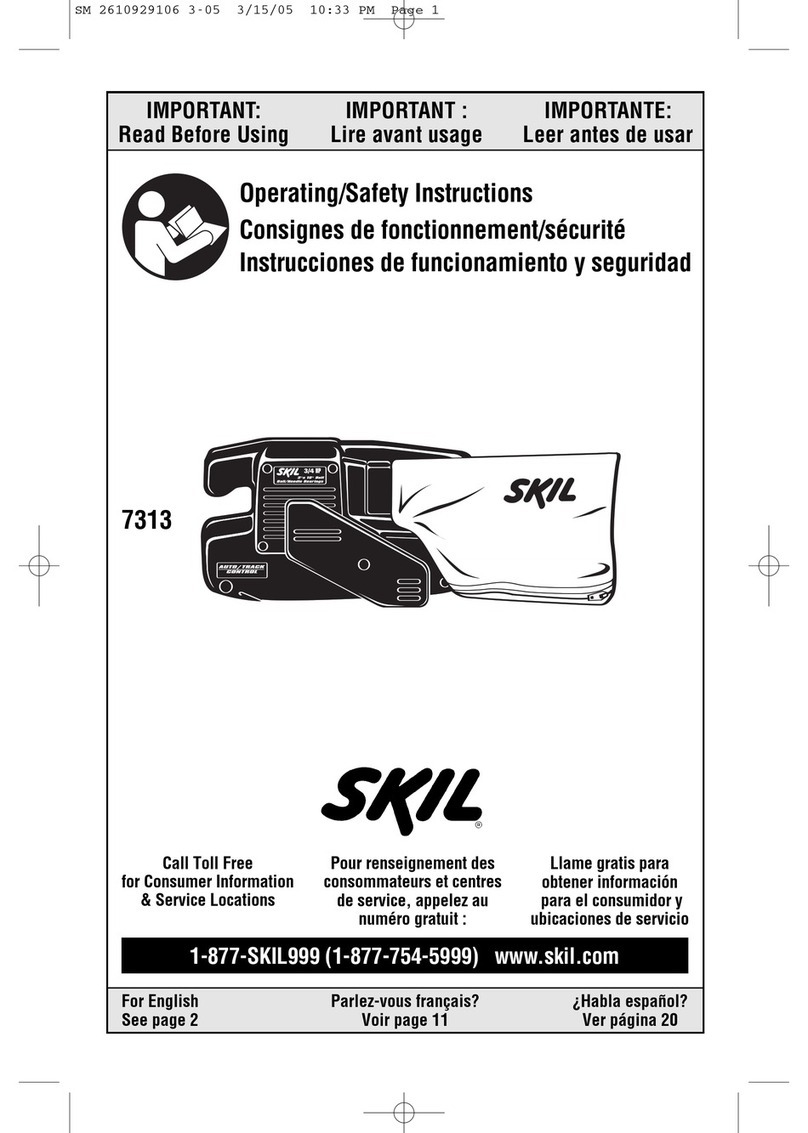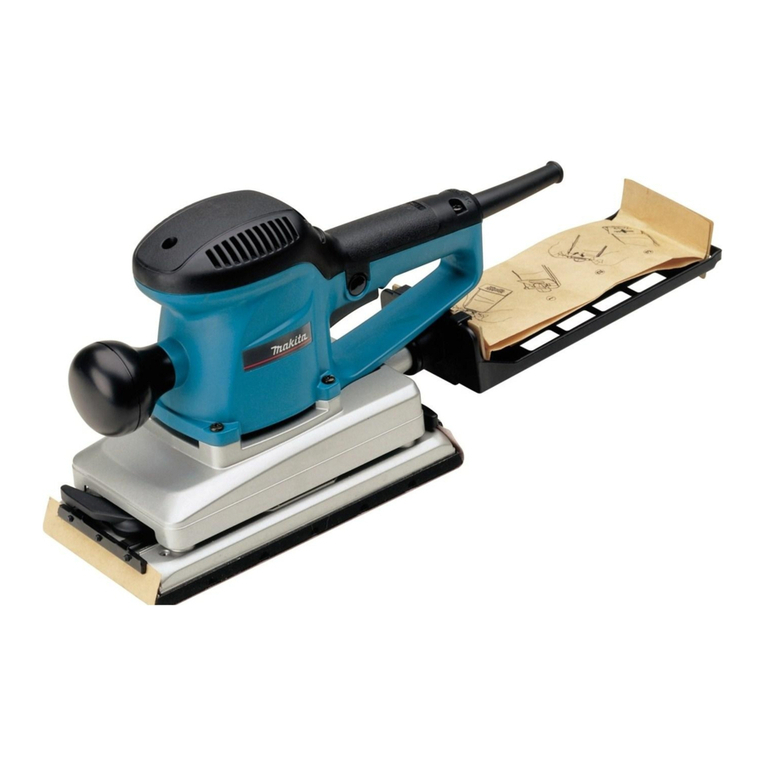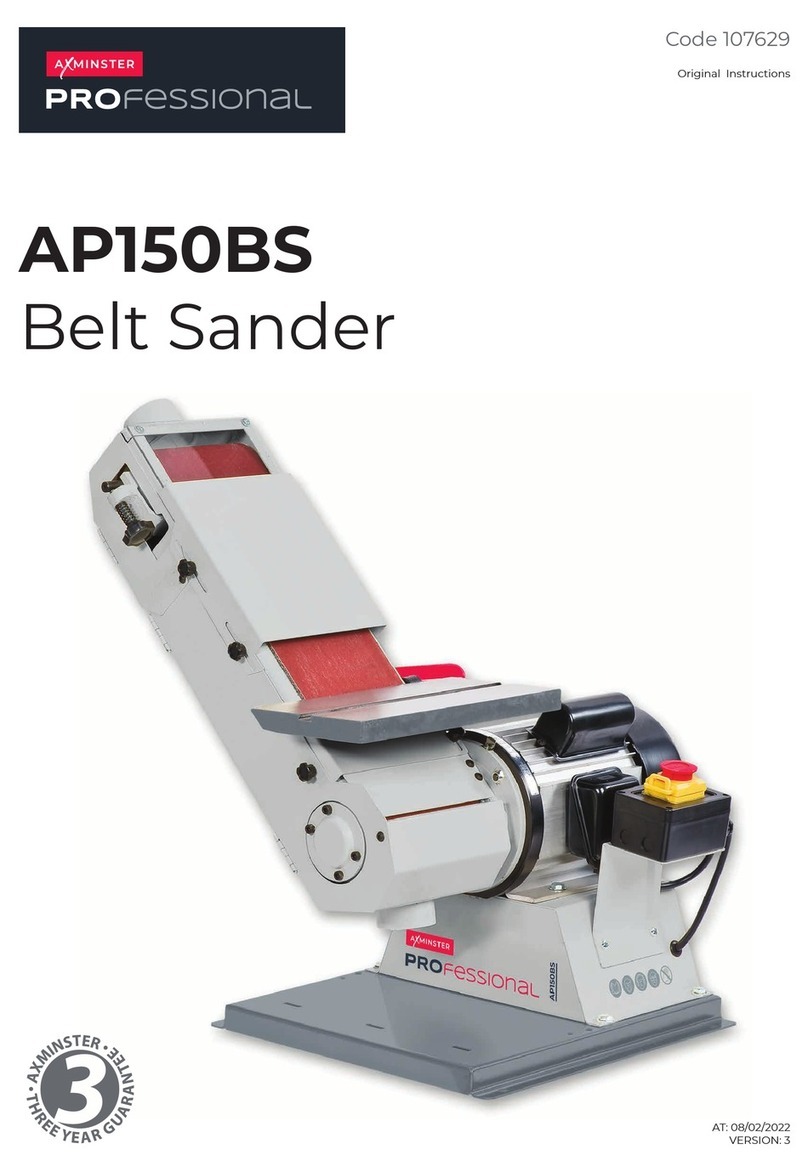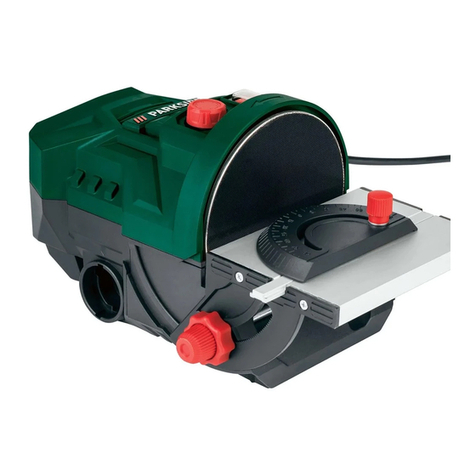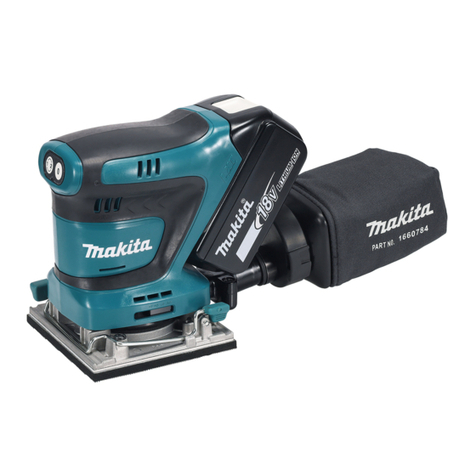WerkMaster Cobra User manual

!!
WerkMaster Grinders and Sanders Inc.
6932 Greenwood Street, Burnaby, BC V5A 1X8
tel: 604.629.8700 | toll free: 1.866.373.WERK | fax: 604.444.4231
www.werkmaster.com | email: support@werkmaster.com
!!!!!!!!!!!!!45!
!
!
!
!
!
!
!
!
!
!
!
!
!
!
!
!
!
!
!
!
!
!
!
!
!
!
!
!
!
!
!
!
!
!
!
!
!
!
!
!
!
!
!
IMPORTANT: Read before using your new machine
© Copyright 2018
OPERATOR’S MANUAL

!!
LIABILITY LIMITATIONS
The remedies of the user set forth under provisions of warranty outlined at the
end of this manual are the exclusive and total liability of WerkMaster Grinders &
Sanders Inc. with the respect to their sale or the equipment and service furnished
hereunder, in connection with the performance or breach thereof, or from the
sale, delivery, installation, repair or technical direction covered by or furnished
under the sale, whether based on contract, warranty, negligence, indemnity, strict
liability, or otherwise shall not exceed the purchase price of the unit of equipment
upon which such liability is based.
WerkMaster will not in any event be liable to the user, any successors in interest
or any beneficiary or assignee relating to this sale for any consequential,
incidental, indirect, special or punitive damages arising out of this sale or any
breach thereof, or any defects on, or failure of, or malfunction of the equipment
under this sale based upon loss of use, lost profits or revenue, interest, lost
goodwill, work stoppage, impairment of other goods, loss by reason of shutdown
or non-operation, increased expenses of operation of the equipment, cost of
purchase or replacement power of claims of users or customers of the user for
service interruption whether or not such loss or damage is based on contract,
warranty, negligence, indemnity, strict liability, or otherwise.
WerkMaster reserves the right to modify, alter and improve any part or parts
without incurring any obligation to replace any part or parts previously sold
without such modified, altered or improved part or parts.
No person is authorized to give any other warranty or to assume any additional
obligation on WerkMaster’s behalf unless made in writing and signed by an
officer of WerkMaster.
As a condition of these warranties, you are responsible for properly using,
maintaining, and caring for your machine as outlined in this Owner’s Manual.
WerkMaster recommends that you maintain copies of all maintenance records
and receipts for review by WerkMaster.
USE ONLY GENUINE WERKMASTER PARTS AND ACCESSORIES FOR
YOUR OWN SAFETY, THE SAFETY OF OTHERS AND THE LIFE OF YOUR
MACHINE. THIS WARRANTY IS NOT VALID IF YOUR MACHINE HAS BEEN
MODIFIED WITHOUT WERKMASTER’S AUTHORIZATION OR REPAIRED
WITH UNAUTHORIZED REPLACEMENT PARTS.

OPERATOR’S)MANUAL))
Page!1!)
CONTENTS
Introduction)....................................................................................................)2!
MACHINE DESCRIPTIONS).............................................................................)2!
Specifications)..................................................................................................)3!
Safety Precautions).........................................................................................)4!
Personal Protective Equipment!.............................................................................!4!
Physical and Mental Fitness!..................................................................................!4!
Safe Operating Distance!........................................................................................!4!
Power!......................................................................................................................!4!
Safe Operating Conditions!....................................................................................!5!
Modifications!...........................................................................................................!5!
Power and Connectivity)..................................................................................)5!
General Connections!.............................................................................................!6!
Adapter Cords!........................................................................................................!6!
Pigtails!.....................................................................................................................!6!
Breakout Box!..........................................................................................................!6!
Quick 220 Adapter!.................................................................................................!6!
Power Cord Minimum Requirements!....................................................................!6!
Generator Minimum Requirements!........................................................................!7!
Introduction to the Controls)............................................................................)7!
Machine Controls!....................................................................................................!7!
VFD Controls!...........................................................................................................!7!
Machine Operation)..........................................................................................)7!
Changing Tools!......................................................................................................!8!
Adjusting the Dust Skirt!.........................................................................................!8!
Adjusting the Handle!..............................................................................................!9!
Starting the Machine!..............................................................................................!9!
Adjusting the Speed!...............................................................................................!9!
Stopping the Machine!...........................................................................................!10!
Viewing the Total Run Time!.................................................................................!10!
Installing and Removing the Pad Driver!..............................................................!11!
Rotation Pattern of Tooling Plates!.......................................................................!12!
Replacing the!.........................................................................................................!12!
Shear Pins!.............................................................................................................!12!
Changing the Primary Belt!....................................................................................!13!
Changing the Secondary Belt!...............................................................................!14!
VACUUM PORT).............................................................................................)16!
WATER FEATURE).........................................................................................)17!
Maintenance)..................................................................................................)18!
Daily!.......................................................................................................................!18!
Weekly!...................................................................................................................!18!
Monthly!...................................................................................................................!18!
Troubleshooting)............................................................................................)19!
APPENDIX – VFD troubleshooting and diagnostics).....................................)21!
EXPLODED VIEW AND PARTS LIST – COBRA and PYTHON)......................)24!
Glossary)........................................................................................................)29!
RPA!.......................................................................................................................!29!
VCT!.......................................................................................................................!29!
Warranty Information)....................................................................................)30!
!!

OPERATOR’S)MANUAL))
Page!2!)
INTRODUCTION))
Congratulations on your purchase of a WerkMaster machine. WerkMaster
machines allow professional surface prep, polishing, grinding, edging, buffing
and restoration of virtually any surface material, including concrete, terrazzo,
stone, and hardwood. This manual is provided to assist you in the operation and
maintenance of your WerkMaster.
!
MACHINE DESCRIPTIONS
WerkMaster machines include the SCARAB, RASP, THE EDGE, THE BOSS,
MIROIR, COBRA, PYTHON, RAZOR, TITAN XT, COLOSSOS XTX and
MAGNUM XTX models. To see the complete family of WerkMaster machines visit
our website at www.werkmaster.com.
!
COBRA
•Aggressive and powerful surface prep and polish machine, designed to
meet the needs of today’s general contractors, facility maintenance
contractors and equipment rentals
•7 Machines in 1 – grinds, sands, strips, polishes, buffs, burnishes, and
edges
•Use for concrete floor prep and polish, as an edger on large commercial
and industrial jobs, or for retail and small commercial polishing and surface
Remove thinset, epoxy, glue, paint and mastic on concrete; works on
spalled and rained out concrete
•Run wet or dry
•Edge to within 1/8” (3 mm) of the wall
•Has an adjustable, foldable handle for easy transport
•Features WerkMaster Multi-Disc technology with 6 counter-rotating heads
and the versatility of using our 6” (152mm) ULTRA-FLEX Plug ‘N Go
tooling system
•Features auto sensing dual phase variable frequency drive that lets you run
at speeds from 450 to 1160 RPM
•Run on 220V 1 or 3 phase; can also be run on two 110V outlets using
WerkMaster’s Quick 220 kit (sold separately)
•Change the tooling and the COBRA can be used on hardwood, stone and
terrazzo
PYTHON
•Aggressive and powerful surface prep and polish machine, designed to
meet the needs of today’s general contactor, facility maintenance
contractors and equipment rentals
•7 Machines in 1 – grinds, sands, strips, polishes, buffs, burnishes, and
edges
•Features a large capacity Water Tank ideal for refinishing and polishing
soft stone (marble), hard stone (granite) and terrazzo
•Remove thinset, epoxy, glue, paint and mastic on stone, terrazzo and vinyl
flooring
•Run wet or dry
•Edge to within 1/8” (3 mm) of the wall

OPERATOR’S)MANUAL))
Page!3!)
•Has an adjustable, foldable handle for easy transport
•Features WerkMaster Multi-Disc technology with 6 counter-rotating heads
and the versatility of using our 6” (152mm) ULTRA-FLEX Plug ‘N Go
tooling system
•Features auto sensing dual phase variable frequency drive that lets you run
at speeds from 450 to 1600 RPM
•Runs on 220V 1 or 3 phase; can also be run on two 110V outlets using
WerkMaster’s Quick 220 kit (sold separately)
•Change the tooling and the PYTHON can be used on concrete and
hardwood
RAZOR
•Professional hardwood floor sander
•Designed to meet the needs of contractors, facility services, equipment
rentals and DIYers
•Use SandPaperLess Refinishing System on hardwood and engineered
hardwood to safely remove aluminum oxide, wax, varnish, shellac and
other floor finishes
•Use on plywood and concrete subfloors to easily remove carpet glue,
thinset, VCT glue, epoxy, paint, and to flatten and level uneven floors
•Refinish wood decks
•Edges to within 1/8” (3mm) of the wall
•Use one machine for both field and edge
•Equipped with 6 counter-rotating heads and the versatility of using either
our 6” (152mm) ULTRA-FLEX full plate tools and sandpapers or the
WerkMaster Plug ‘N Go tooling system
•Has!an!adjustable,!foldable!handle!for!easy!transport!
•Features auto sensing dual phase variable frequency drive that lets you run
at speeds from 450 to 1600 RPM
•Runs on 220V 1 or 3 phase; can also be run on two 110V outlets using
WerkMaster’s Quick 220 kit (sold separately)
•Change the tooling and the RAZOR can be used on concrete, terrazzo and
stone
SPECIFICATIONS)
MODEL COBRA PYTHON
RAZOR
Dimensions l x w in
l x w cm
30 x 17 (handle included)
76 x 73
38 x 17 (handle included)
96.5 x 73
30 x 17 (handle included)
76 x 73
Disc Size: in / cm
6 / 152
6 x 152
6 / 152
Weight lb / kg
362 / 164.2
382 / 173.3
362 / 164.2
Disc Speed: RPM
400-1160
400-1160
400-1160
Horsepower: HP
5
5
5
Phase: Ph
1~ / 3~
1~ / 3~
1~ / 3~
Vacuum Req: CFM
200
200
200
Min. Generator: kW
6+
6+
6+
Frequency Hz
50 / 60
50 / 60
50 / 60
Breaker Size: Amp
30
30
30
Voltage V
200-230
110 with Quick 220
(sold separately)
200-230
110 with Quick 220
(sold separately)
200-230
110 with Quick 220
(sold separately)

OPERATOR’S)MANUAL))
Page!4!)
SAFETY PRECAUTIONS
)
)
)
Read this manual and all the safety precautions before attempting to
operate WerkMaster machines. Failure to follow the safety precautions may
result in severe personal injury or death. This product is intended for
commercial use.
•Wear eye and ear protection at all times when operating WerkMaster
machines. Use only ANSI/OSHA-approved safety glasses to help prevent
eye injury.
•Wear appropriate clothing and footwear when operating WerkMaster
machines. Do not wear loose clothing or jewelry that may become
entangled in moving parts.
•Exposure to wood dust may cause health problems. To reduce your risk,
work in a well-ventilated area, use a dust control system such as an
industrial-style vacuum, and wear approved personal safety equipment,
such as a dust or particle respirator designed to filter out microscopic
particles.
•Crystalline silica from bricks and concrete and other masonry products may
cause health problems. To reduce your risk, work in a well-ventilated area,
use a dust control system such as an industrial-style vacuum, and wear
approved personal safety equipment, such as a dust or particle respirator
designed to filter out microscopic particles.
•NEVER operate WerkMaster machines under the influence of drugs or
alcohol, when taking medications that impair the senses or reactions, or
when excessively tired or under stress.
•Only operate and maintain WerkMaster machines if you are trained in their
use and are in good physical condition and mental health. You must be
physically able to handle their bulk, weight and power.
•WerkMaster machines are to be operated by one person at a time. Maintain a
safe operating distance to other personnel. Keep bystanders a safe distance
away during operation by blocking off the work area in all directions with roping,
safety netting, or other material. Failure to do so may result in someone being
injured by flying debris or being exposed to harmful dust and noise.
•Maintain a safe operating distance from flammable materials. Sparks from
the cutting action may ignite flammable materials or vapors.
•Unplug the WerkMaster’s power cord when not in use and before servicing
or changing tooling plates.
•Turn the WerkMaster machine off before disconnecting power.
•DO NOT disconnect power by pulling the cord. To disconnect power, grasp
the plug, not the cord. To remove twist-lock plugs, turn counter-clockwise
and pull apart, and to engage the plugs, push in and turn clockwise.
•DO NOT turn on the WerkMaster while it is tilted back. Any tooling fastened
to the WerkMaster may eject and become a lethal projectile.
•While in use, ground this floor-finishing machine to protect the operator
from electric shock. The machine is provided with a three-conductor cord
and a three-contact grounding type attachment plug to fit the proper
grounding type receptacle. The green (or green and yellow) conductor in
Personal Protective
Equipment
Physical and
Mental Fitness
Safe Operating Distance
Power
!!!!!!!!!!!!!!!!!!!!!!!!!!!!!!!!!! )WARNING)

OPERATOR’S)MANUAL))
Page!5!)
the cord is the grounding wire. NEVER connect this wire to other than the
grounding pin of the attachment plug.
•Be sure all safety decals on the machine can be clearly read and
understood. Replace damaged or missing decals immediately.
•Maintain WerkMaster machines in safe operating condition with all guards
in place and secure, all mechanical fasteners tight, all controls in working
order, and the grinder configured for the job application whether concrete,
stone, terrazzo, wood or other surfaces.
•To prevent damage to your machine or severe personal injury, avoid
protruding slab inserts, nails, screws, Hilti anchors, rebar, embedded bolts
or any other debris, pipe extensions, machinery bases, or any objects that
transmit sudden shock to the grinding assembly.
•Inspect the tooling carefully before installing. DO NOT use any tooling that
exhibits signs of damage, as severe personal injury or damage to the
equipment could result.
•NEVER leave WerkMaster machines running unattended.
•Risk of Explosion: Grinding/polishing concrete surfaces and sanding/finishing
wood floors can result in an explosive mixture of fine dust and air. Use this
machine only in a well-ventilated area free from any flame, match or
combustibles materials.
Dust generated from sanding wood floors can spontaneously ignite or
explode. Promptly dispose of any sanding dust in a metal container clear of
any combustibles. Do not dispose of in a fire.
•DO NOT modify WerkMaster machines. Modifications will void the
warranty and may result in injury to persons and damage to the machine.
POWER AND CONNECTIVITY
WerkMaster machines are outfitted with a variable-frequency drive (VFD) that
allows the desired grinding speed to be selected. Along with controlling the
speed of the machine, the VFD features include the following:
•Undervoltage protection (damages most single-phase motors)
•+/- 10% voltage protection
•60 Hz and 50 Hz capability (international)
•Wide voltage range (200–230V)
•Soft start (smaller generator requirements)
•Monitor pad speed display
!
!
!
NEVER open the VFD panel while plugged in or immediately after
unplugging the power cord. Severe injury or death may result.
Safe Operating Conditions
Modifications
!!!!!!!!!!!!!!!!!!!!!!!!!!!!!!!!!! ))DANGER)

OPERATOR’S)MANUAL))
Page!6!)
WerkMaster machines come with a variety of different plug configurations. The
following table lists the plug used on the COBRA, RAZOR and the PYTHON.
!
MODEL COBRA PYTHON RAZOR
Voltage
250V
250V
250V
Breaker Size
30 A
30 A
30 A
Phase Configuration
3 Phase
3 Phase
3 Phase
Cord End
4 pole 3 wire twist lock
4 pole 3 wire twist lock
4 pole 3 wire twist lock
!
WerkMaster machines come in a variety of voltage and phase configurations.
The COBRA, RAZOR and PYTHON are typically configured to operate on 208-
230V three-phase power. They are capable of operating on single-phase 208-
230V power with the use of a single-phase to 3-phase adapter cord (included),
as well as 110V using a Quick 220 and a 20 Amp adapter cord.
Pigtails are plug ends with unfinished bare wire on one end for hooking up to
panels. Pigtails are used when connectivity is unknown, when connecting to the
power grid of an unfinished building that has no power receptacles, or when
operating certain generators. Many pigtails are available or can be made up by
an electrician.
ONLY certified electricians should make and/or install a pigtail in to a
panel.
Draws power from either a stove/range or a dryer outlet and breaks it out into 2 x
20 Amp circuits that can be used to power both a WerkMaster machine and
auxiliary equipment such as a vacuum of the 110V Quad Box (sold separately).
When using the machines in a residential environment, source power may be
hard to find. Plug two 110V cords from the Quick 220 into the 110V wall outlet on
two (2) separate circuits on opposite sides of the panel. Plug the WerkMaster
machine into the 20 AMP TO 30 AMP adapter cord and the cord into the Quick
220 Adapter.
NOTE: For both the Breakout Box and the Quick 220Adapter a 20 Amp to 30
Amp single-phase to three-phase adapter with a 10/3 cord (sold separately) OR
a 20 Amp to 30Amp to three-phase adapter on a 10/4 cord (sold separately) is
required.
The following table lists the minimum requirements for power cords.
!
General Connections
Adapter Cords
Pigtails
Breakout Box
Quick 220 Adapter
Power Cord
Minimum Requirements
MODEL
DISTANCE
MINIMUM REQUIREMENT
COBRA
Up to 300 ft
Single-phase minimum gauge of 10/3
Three-phase minimum gauge of 10/4
PYTHON
Up to 300 ft
Single-phase minimum gauge of 10/3
Three-phase minimum gauge of 10/4
RAZOR
Up to 300 ft
Single-phase minimum gauge of 10/3
Three-phase minimum gauge of 10/4
!!!!!!!!!!!!!!!!!!!!!!!!!!!!!!!!!! ))DANGER)

OPERATOR’S)MANUAL))
Page!7!)
!
!
The minimum generator requirement for the COBRA is 6 kW.!!
!
!
!
!
Exercise extreme caution at all times when working with electrical power.
WerkMaster strongly recommends that only certified electricians be permitted to
work with electrical power sources within a customer’s facility or on their job site.
INTRODUCTION TO THE CONTROLS
!
All machine operating controls are found on the handle NOT on the keypad of the
VFD.
The VFD controls are locked out to avoid accidentally changing necessary
parameters.
MACHINE OPERATION
)
)
ALWAYS turn off and disconnect power from the machine when performing any
operations to the bottom of the machine. The machine and the tooling may be
hot after using.
!
!!!!!!!!!!!!!!!A!!!!!D)
!!!!!!!!!!!!!!!J))) )
!!!!!!!!!!!!!!!))))))))))
!
C))))))))))))I)
!!!!!!!!
!
!!!!!M)
!!!!!!!!! ! ! ! !!!
!!!!!!!!!!! ! ! ! !
! !
!
!
!!!!!L!!!!!!!!G)
!
Fig.!1!!!!!!!!!!!Fig.!!2!!!!!!!!!!!!!!!!!!!!!!!!!!!!!!!Fig.!3!
!
!
!
!
!
!
!
Generator
Minimum Requirements
Machine Controls
VFD Controls
!!!!!!!!!!!!!!!!!!!!!!!!!!!!!!!!!! )WARNING)
!!!!!!!!!!!!!!!!!!!!!!!!!!!!!!!!!! )WARNING)
!

OPERATOR’S)MANUAL))
Page!8!)
!
O) !!!!!!!!!!)A))
!!!!!!!!!!!!!!!!!!!!!!J!
!!!!!!!!!!!!!!!!!!
F))))))))))))))))B)
!!!!!!!!!!!!
E) !!!!!!!!!!!!!!!H))
)
))))))))))))N))))))
D)
!
))))))))))))))))))))))))K)
!!!!!!
!
!
!
!
Fig.!4!!!!!!!!!!!!!Fig.!5!
!
1. Unplug the power cord from the twist lock inlet (C).
2. Ensure the handle is in its full upright position (Fig 2). Tilt the machine back
(Fig 3).
3. Choose the appropriate tooling holder attachment – magnetic Plug ‘N Go plate
(D) (Fig 4) for Metal Bond tools or Foam/Hook and Loop Adapter plate for
polishing resins and sanding pads.
4. Insert the two shear pins (N) through the compression foam pad (E) into the
rubber grommets on the pad driver (F). Attach the tooling to the plate.
4. Return the machine to the upright position (Fig 2).!
!
The dust skirt (G) serves as a seal for the bottom of the machine acting as a
vacuum chamber helping the dust stay contained under the machine. If the skirt
is too far from the ground, the dust containment is reduced.
To adjust the skirt:
1. Remove loop retaining strap (L)
2. Pull one end of the skirt off the front of the machine until you reach the middle
of the skirt at the rear of the drive train,
3. Position the skirt until it is barely touching the ground and repeat with the other
end.
4. Pull the skirt snug. The two ends of the skirt should not touch. You may have a
gap of up to one inch. Replace the loop retaining strap.
!!
!
Avoid positioning the skirt too low as it will drag against the ground, wearing the
skirt out prematurely and possibly preventing smooth machine movement.
Changing Tools
)
Adjusting the Dust Skirt
!!!!!!!!!!!!!!!!!!!!!!!!!!!!!!!!!! ))CAUTION)

OPERATOR’S)MANUAL))
Page!9!)
To adjust the handle, pull the pin (H). Adjust the handle to a comfortable
operating position. Re-insert the pull pin.
!
!
!
Failure to check the pull pin is fully reinserted could result in damage to the
machine or personal injury as the handle could release unexpectedly when the
machine is being operated or tilted back.!
!
!
When the machine is first plugged in, a start-up screen (I) (Fig 1) will appear
showing the VFD model and the software version that it has been released with.
After the machine runs through its initial start-up sequence, the screen (I) will
show the VFD status and pad driver speed in revolutions per minute (RPM).
To start the machine:
1. Gently squeeze the activation lever (J) and press and release the START
button (A). If doing heavy prep/coating removal, apply a slight downward
pressure on the handle to alleviate some weight off the tooling when starting
the machine ensuring the machine does not lift off the ground.
2. Once the machine starts, gently release the downward pressure and begin
grinding.
DO NOT lift the machine off the ground while starting it. Doing so could
cause the tooling to release from the machine, resulting in damage to the floor or
personal injury.
The speed of the machine can be adjusted when it is running or when it is
stopped. To adjust the speed, rotate the speed control knob (B) (Fig 5) on the
handle clockwise to slow it down, or counterclockwise to speed it up. Always start
the machine at the lowest speed and adjust as necessary.
Once the machine reaches the desired speed, the speed will remain constant as
long as the load applied remains below 100%. If the machine is running at speed
and the load begins to exceed 100%, the machine will reduce its speed as a
protective measure to try and alleviate the outstanding load. The current running
speed will be displayed. This happens under demanding conditions and is
normal.
If the machine is not able to maintain the minimum speed for more than 30
seconds the machine will turn off. This is a normal protective measure. To
prevent this from reoccurring alleviate some of the load and then resume
operation.
!
Adjusting the Handle
Initial Start Sequence
Starting the Machine
Adjusting the Speed
!!!!!!!!!!!!!!!!!!!!!!!!!!!!!!!!!! )WARNING)
!!!!!!!!!!!!!!!!!!!!!!!!!!!!!!!!!! )WARNING)

OPERATOR’S)MANUAL))
Page!10!)
1. Release the activation lever.
When you unplug the machine, the screen will stay lit for a few seconds as the
VFD drains the power from its internal capacitors. This is normal.
!
)
)
)
NEVER open the VFD panel while plugged in or immediately after
unplugging the power cord. Severe injury or death may result.)
)
!
To view these screens:
1. Access the programming menu by pressing and holding the
SHIFT key and pressing the program (PROG) key once.
!
!
!
!
!
!
!
!!!!!!!!!!!!!
!
!!!!!!!!!!!!!!!!!!!!!!!!!!!!!Program!Key!!!!!Shift!Key!!!!!!
2. Press ENTER to bypass the access code screen and enter the programming
menu.
!
!
!
!
!
!!!!!!!!!!!!!!!
!
!
!!!!!!
!!!!!!!!!Enter!Key!
3. Using the up and down arrow keys, scroll down until you reach parameter
V109. This parameter displays the total time the machine has been in plugged
in.
Stopping the Machine
Viewing the Total Run Time
!!!!!!!!!!!!!!!!!!!!!!!!!!!!!!!!!! ))DANGER)

OPERATOR’S)MANUAL))
Page!11!)
4. Using the arrow key, scroll to parameter V108. This parameter displays the
total time that the machine has actually been running.
5. To exit the programming menu, simply press the program (PROG) button.
This should bring you back to the main operation screen.
Program!Key!
!
!
!
To install and remove the pad driver on the bottom of the machine, you will need
a 17 mm socket wrench, a soft face mallet, and some medium-strength thread
locker (blue Loctite 243 or equivalent).
To remove the pad driver:
1. Slip the 17 mm socket wrench over the pad driver bolt and strike the wrench
with the soft face mallet in a counter-clockwise direction to loosen, then
remove the bolt (O).
2. When installing a new pad driver or re-installing an existing one, apply a
generous amount of thread locker compound to the bolt and threaded drive
shaft. Insert bolt through the hole in the pad driver.
NOTE: Reapply thread locking compound every time a pad driver is removed.
3. Line up the bolt to the threaded end of the shaft and start the first couple of
threads.
4. Once the bolt is engaged, make sure the drive shaft is properly seated within
the pad driver slot before tightening the bolt all the way.
!
!
Failure to seat the pad driver could result in the pad driver slot being stripped out,
the threads in the shaft being stripped, the machine leaving heavy tool marks,
and the tooling overheating.
Installing and Removing
the Pad Driver
!!!!!!!!!!!!!!!!!!!!!!!!!!!!!!!!!! ))CAUTION)

OPERATOR’S)MANUAL))
Page!12!)
!
!
Discs 1, 2, and 3 rotate
clockwise CW
)
)
Discs 4, 5, and 6 rotate
counter-clockwise CCW
)
)
)
!!!!!!!!Bottom!of!WerkMaster!with!numbered!tooling!plates!and!clockwise!and!counterclockwise!labeling.!
!
!
To replace a broken shear pin:
1. Remove the Plug ‘N Go plate (D) (Fig 4) from the pad driver (F). Before
replacing the shear pin apply a generous amount of permanent red thread
locker (Loctite 266) on the screw and into the hole.
2. Hold the shear pin securely and firmly tighten the screw until the shear pin
cannot spin. Replace the Plug ‘N Go plate.
To replace a bent shear pin:
1. Remove the Plug ‘N Go plate (D). Remove the bent shear pin by hitting with a
hammer. Before replacing the shear pin apply a generous amount of
permanent red thread locker (Loctite 266) on the screw and into the hole;
tighten.
2. Hold the shear pin securely and firmly tighten the screw until the shear pin
cannot spin. Replace the Plug ‘N Go plate.
SEE: How To Series: Replacing a Shear Pin
at http://www.werkmaster.com/replacing-a-shear-pin/
Rotation Pattern of
Tooling Plates
Replacing the
Shear Pins

OPERATOR’S)MANUAL))
Page!13!)
!
!!!!!!!!!!!!!!!
!!!!!!!!!!!!!!!!Motor Mount Assembly Handle
Motor Mount Assembly
Motor Shaft
Primary Driven Housing
Primary Belt
Motor Coupling
Primary Driven Sprocket
Cover Plate
Cover Plate Gasket
Drive Train Top Plate
Drive Train Gasket
Secondary Belt
Sprockets
Drive Train Bottom Plate
M8 Flat Socket Cap Screws
Water Baffles (PYTHON only)
Baffle Screws (PYTHON only)!
!
!
!
!
!
!
!
!
!
!
!
!
!
!
!
!
!!!!!!!!!!!!!!!!!!!!!!!Fig. 6
Changing the Primary
Belt

OPERATOR’S)MANUAL))
Page!14!)
To change the Primary Belt:
!
1. Disconnect the power and ensure the handle is in the upright position.
2. Unscrew the handle control cable (K) (Fig 5) from the VFD.
3. Remove the five button cap screws holding the Shroud (M) Fig 2) in place.
4. Remove the Shroud.
5. Remove the four M10 hex head bolts holding the Motor Mount Assembly (Fig
6) onto the Lower Assembly.
6. Lift the Motor Mount Assembly straight up until the Motor Sprocket is
completely clear of the base.
7. Remove four M10 flat socket cap screws from the Primary Driven Housing
and remove the Housing.
8. Remove and replace the belt.
9. Replace the Primary Driven Housing, apply blue thread locker (Loctite 243)
and insert the four M10 flat socket cap screws.
10. Lower the Motor Mount Assembly onto the Primary Driven Housing cover, tilt
the Motor Mount Assembly back and loop the belt around both the Primary
Driven Sprocket and the Motor Shaft Sprocket.
11. Maintain tension on the belt and pull the Motor Mount Assembly forward and
into place.
12. Apply blue thread locker (Loctite 243) to the M10 hex head bolts and insert,
thread in half way.
13. Tilt the machine 45 degrees forward for steps 14 and 15.
14. Rotate a pad driver two full rotations to seat the belt completely.
15. Complete tightening the M10 hex head bolts.
16. Return machine to level.
17. Replace the Shroud.
18. Apply blue thread locker (Loctite 243) to the button cap screws and replace.
19. Reconnect the handle control cable (K) in the VFD.
!
!
!
!
!
!
!
Jack Points
Secondary Belt Path
Fig. 7 Fig. 8
Changing the Secondary
Belt

OPERATOR’S)MANUAL))
Page!15!)
Drive Train Top Plate
Drive Train Gasket
Sprockets
Secondary Belt
Drive Train Bottom Plate
Sealing Washers
Hex Head Idler Bolts
M8 Flat Socket Cap Screws
Water Baffles
Baffle Screws
Pad Drivers
Compression Foam
Tooling Plates
Fig. 9
To change the secondary belt:
1. Disconnect power and ensure the handle is secure in the upright
position.
2. Tilt the machine back.
3. Remove the Plug ‘N Go plates and pad drivers.
4. Remove the water baffles.
5. Remove the two hex head idler bolts and the sealing washers.
6. Remove the twelve M8 flat socket cap screws from the drive train
bottom.
7. Insert six long M8 screws into the Water Baffle threaded hole that is
used as a jack point (Fig 7) until snug.

OPERATOR’S)MANUAL))
Page!16!)
8. Make a half turn of each screw clockwise until the drive train plates start
to separate.
9. Completely separate the drive train top plate from the drive train bottom
plate exposing the sprockets and belts. Remove the jack point screws
(Fig 7).
10. Remove the gasket.
11. Remove the broken/damaged belt.
12. Replace the belt (Fig 8).
NOTE: Removing one sprocket and the shaft assembly may make the
belt installation easier,
13. Replace the gasket with a new gasket (P 21).
NOTE: If factory gasket is not available use 1/4” w x 3/8”h closed cell,
adhesive-backed weather stripping.
14. Carefully line up the bottom plate with the shafts.
15. Apply Anti-Seize on the long M8 screws.
16. Thread five of the long M8 screws through the bottom plate at the four
corners and one near the center.
17. Slowly and evenly make a half turn of each screw in a clockwise
direction until all the shafts are lined up with the bottom plate.
18. Thread in all the remaining M8 screws and in a crisscross pattern, slowly
clamp the drive train plates together.
19. Apply blue thread locker (Loctite 243) to the two hex head idler bolts and
with the sealing washer, replace.
20. Tighten each M8 screw to 150 in/lbs.
21. Replace the water baffles and apply blue thread locker (Loctite 243) to
all water baffle fasteners.
NOTE: DO NOT reuse gaskets. Replace all gaskets with new ones
every time the gaskets are removed or the Drive Train is opened.
!
!
VACUUM PORT
For the COBRA, PYTHON and Razor:
!
The vacuum recommended for all the machines has a minimum CFM of 200.
!
1. ALWAYS run vacuum when sanding or dry grinding.
2. The vacuum port accepts a standard 2” vacuum hose cuff.
3. Always refer to vacuum manual.
NOTE: ONLY use a wet/dry vacuum with the PYTHON.
Vacuum

OPERATOR’S)MANUAL))
Page!17!)
WATER FEATURE
The PYTHON is equipped with a water feature.
A
To use the water feature:
1. Ensure the flow control valve is closed (B). B
2. Fill the water tank (A).
3. Insert water feature plug into the vacuum port (C). C
4. Slowly open the flow control valve to the desired water
flow and close as required.
5. Operate machine normally.
!
!
!
!
Use extreme caution when working with electricity and water. Severe injury
or death may occur if caution is not used.
!!!!!!!!!!!!!!!!!!!!!!!!!!!!!!!!!! ))DANGER)

OPERATOR’S)MANUAL))
Page!18!)
MAINTENANCE
!
!
Disconnect power before performing any maintenance, cleaning, or repair
to your machine.
After wet operation, wash bottom of the machine thoroughly, failure to do
so may result in damaged bearing seals.
Do not use any sharp object or abrasive pad to clean the bearing seals.
This can compromise the bearing seals.
•Wipe down the machine after every job.
•Gently remove dirt and debris from the pad driver.
•Check grommets and replace if necessary.
•Vacuum, wash and thoroughly dry the underside of the machine.
•Inspect the plug ends for signs of carbon deposits and arcing.
•Check all fasteners and tighten if necessary.
•Inspect the handle wires for damage.
•Blow off the VFD heat sink with compressed air.
•Using a soft scrub pad, remove any excess dirt build-up from the bottom
plate and back side of the pad drivers.
•Inspect bearing seals around shaft for any wear or damage.
•Remove the pad drivers and inspect the threads to make sure there are no
signs of cross-threading or stripping. Remove excess thread locking
compound from bolts using a wire brush or by washing the bolts in a
solvent. Reapply blue thread locking compound (Loctite 243) and reinstall
pad drivers. Make sure bolts are tight.
!
!
After wet operation, wash bottom of the machine thoroughly, failure to do
so may result in damaged shaft seals.
Do not use any sharp object or abrasive pad to clean the shaft seals. This
can compromise the shaft seals.
•Check all strain reliefs and make sure they are tight. (Strain reliefs are the
plastic nuts that secure the wires that come out of the handle and VFD.)
•Clean and lubricate wheels.
•Using an extremely light abrasive pad, remove any topical rust from the
shafts.
Daily
Weekly
Monthly
!!!!!!!!!!!!!!!!!!!!!!!!!!!!!!!!!! )WARNING)
!!!!!!!!!!!!!!!!!!!!!!!!!!!!!!!!!! ))CAUTION)
!!!!!!!!!!!!!!!!!!!!!!!!!!!!!!!!!! ))CAUTION)
This manual suits for next models
2
Table of contents
Other WerkMaster Sander manuals

